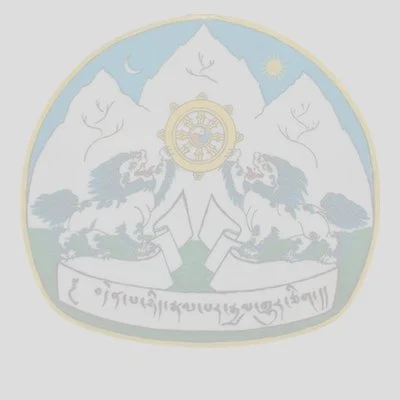
Introduction
Lugsung Samdupling Tibetan Settlement is the first Tibetan settlement in India. It was started in 1960 with the help of Indian Government for initial population of 3000 settlers. Later assisted by number of other foreign funding agencies and individuals assisted to improve upon the existing infrastructure. This settlement is also one of the biggest Tibetan refugee settlements in India and the total area of the settlement is 3210 acre.
Settlement Location:
It is located at Bylakuppe village in Periyapatna Taluk of Karnataka State, south of India at about 52 miles west of Mysore City. The nearest town of the settlement is Kushal Nagar. It is at 7 Km from the settlement Office. It lies on a flat plain at the height of 2,600ft., above sea level. Average temperatures at Bylakuppe ranges between 80° to 95° Fahrenheit, and average rainfall is around 30-34 inches annually.
Settlement Population
No of Villages:
This Settlement consists of 7 villages or camps scattered at different location with average of 30 families in each camp. The distance between each settlement is about 4 to 6 Km.
Settler’s Livelihood:
Most of the original families have a small piece of agricultural land for their living. Due to lack of irrigation facilities, the rain fed crop agriculture is practiced, which is not sufficient to sustain the families on farming alone. Besides agricultural, the settlers are engaged in trading, restaurants, shop keeping, and seasonal sweater selling etc.
Facilities in the settlement
| Co-operative Society | The settlers themselves in 1961 started a Co-operative Society and it was formally registered in 1964 under the Indian Co-operative society act. The main purpose of the co-operative society was to carry out the trading activities of the settlement. These seemed to be profitable undertaking as the main market is far from the settlement. The co-operative Society now runs few small enterprises, including a flour-mill, a carpet weaving Centre, a poultry farm, an animal husbandry program, a mechanical workshop, and several shops. It also helps farmers in procuring and supplying farm inputs. In order to pursue the more advantages to the settlers, the Co-operative society should create a small marketing and support unit. |
|---|---|
| School & Education |
In order to adjust with modern way of living and to widening the Tibetan issue to outside world, education becomes the very important to the younger generation. Almost all the elder Tibetan refugees who came to exile in India after the Chinese occupation of Tibet were illiterate. And while living in exile they feel that educating the exile children is one of the most productive and positive things they can do towards the getting the Chinese out of their country. Education is thus important as a way of beating the Chinese. As such school were opened in the settlements to educate their children. Tibetan Children Village school was established in 1984 with the initial of 90 students and at present there are 1040 school going children with total of 121 staffs. There are about 30 to 35 students per class. The school is required to follow the basic Indian syllabus but incorporate with Tibetan element. Besides school under management of TCV, Dharamsala, and settlement also has Central School for Tibetan run five schools and the main school up to +2 level with 391 students. |
| Health & Hospital | one modern allopathic dispensary one traditional Tibetan medical clinic |
| Monastery | The settlement has 5 monasteries. Namely:1. Sera monastery, 2. Namdrolling monastery, 3. Nyingma monastery, 4. Sakya monastery, 5. Nyingma monastery. |
Sera monastery is the biggest monastery among them with almost 3000 monks.
Administrative setup
Representative:
The settlement officer who is appointed by the Central Tibetan Administration, Dharamsala is the over all in charge of the settlement in all spheres ranging from maintaining law and order to development and poverty alleviation works. He acts as liaisons between CTA, state and central government agencies and any other concerns. Under him, each camp has an elected camp leader who is assisted by group leaders. All development works are implemented through the camp leaders. Settlement officer takes all major decisions in consultation with the camp leaders and is the most important link between the settlement office and the community.
Group Leaders:
Each of the 7 villages possess an elected group leaders whose job is to act as an intermediary with relevant authorities, pass on information, settle disputes and collect money. Group leaders are not elected for their policy-making idea, nor do they campaign on certain issue. These group leaders are chosen on the basis of their strength of personality and once ability to stand before the interest of their village. The duty of the leader is more or less like the representative, but on smaller and more personal scale.
Traveling Mode
| Nearest Railway station | Mysore Disrtict at a distance of 87 Kms from settlement |
|---|---|
| Nearest Airport | Bangalore Airport at a distance of 240 Kms from settlement |
